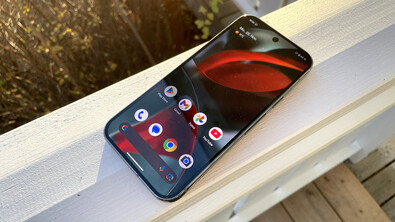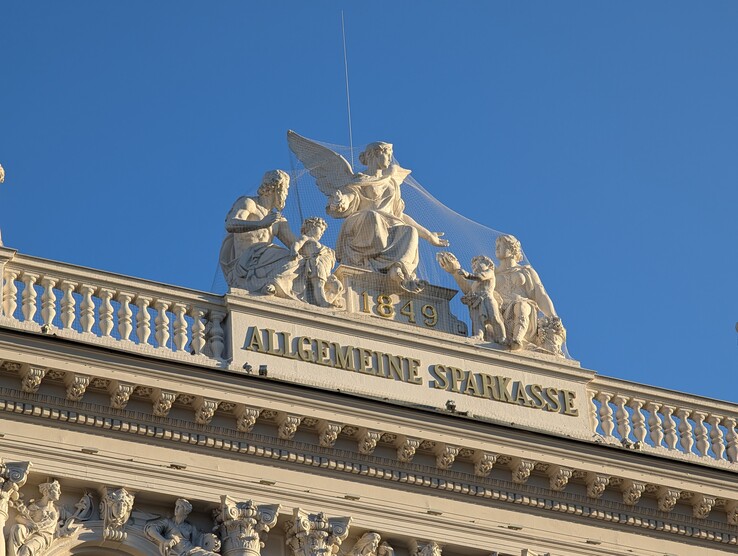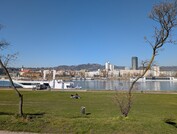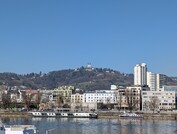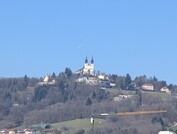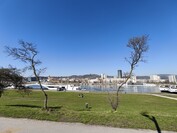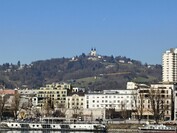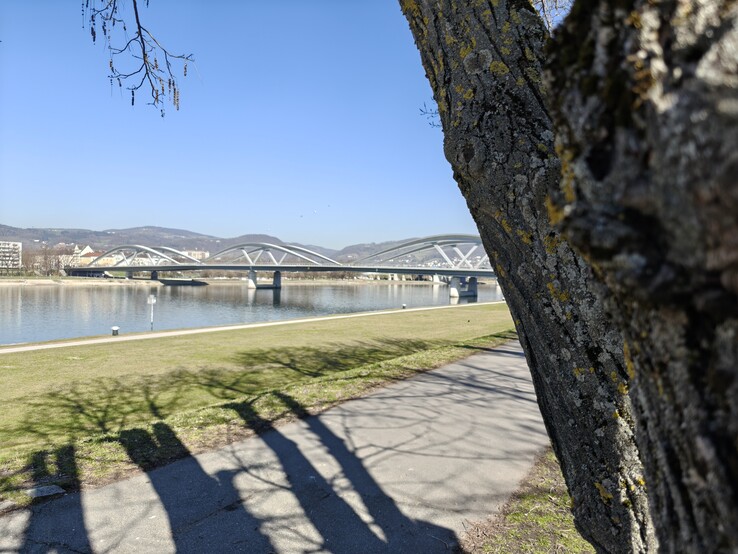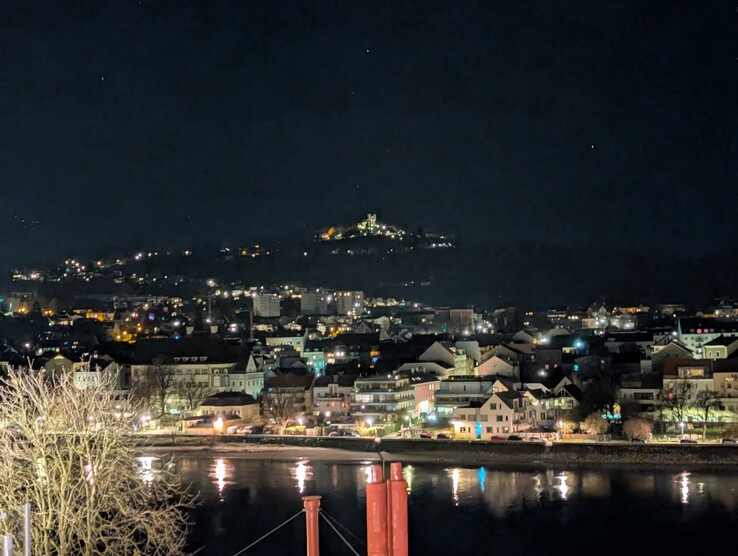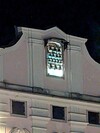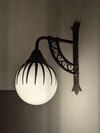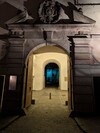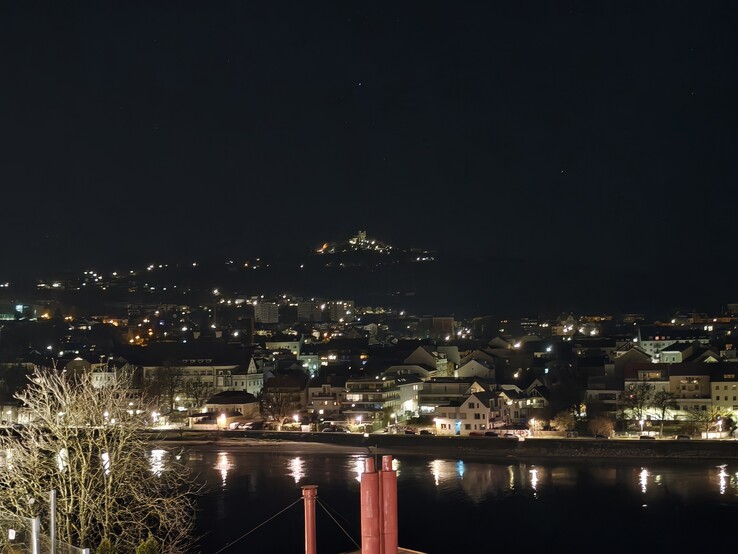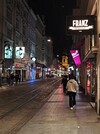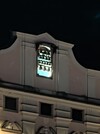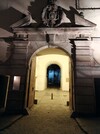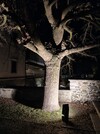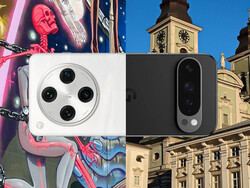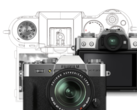
Music, murals and museums: Photo comparison with two of the best smartphone cameras of 2025
Duel on the Danube.
Linz has made a name for itself as the European Capital of Culture in 2009, offering a mix of industry, nature, shopping, history, and culture. We explored Austria's third-largest city with the Google Pixel 9 Pro and Oppo Find X8 Pro. Which smartphone takes better travel pictures?Florian Schmitt, 👁 Florian Schmitt (translated by Enrico Frahn) Published 🇩🇪 🇫🇷 ...
"Take a risk - visit Linz!", this is the slogan of the city's tourism initiative, which we are presenting today in our photo comparison with the Google Pixel 9 Pro and the Oppo Find X8 Pro. It sounds more dangerous than it is and mainly refers to the fact that until a few decades ago, Linz was primarily famous for its steel industry and few people wanted to come here voluntarily.
It was recognized early on that the city would hardly have a future as a purely industrial city. Therefore, it turned to its cultural heritage, baroque and historic architecture and its beautiful location on the Danube between the hills in order to become more interesting for tourists. Many new impulses drove the city forward, and there are now 8 universities and colleges with a total of almost 30,000 students in the city.
The Ars Electronica Festival, which was founded in 1979 and focuses on media art in conjunction with modern technology, and Linz's nomination as European Capital of Culture in 2009 also drew attention.
Facts about the test devices
Our two test devices are two high-end smartphones from Google and Oppo.
- The Google Pixel 9 Pro comes with a 50-megapixel main camera, a 48-megapixel ultra-wide-angle and 48-megapixel periscope zoom lens. An optical zoom of up to 5x is possible. The Pixel smartphone is available for around €740 or an MSRP of $999 in the US.
- The Oppo Find X8 Pro is still more of an insider tip in most markets. However, the clean software and four 50-megapixel camera lenses make it well worth a look for photography fans. The two telephoto cameras with a focal length of 73 and 135 mm, both of which also have a periscope zoom, make the smartphone particularly interesting for taking pictures of distant objects or detailed shots. However, it is only available from a few retailers, where it costs less than €900 at the time of writing.
The camera system of the Oppo Find X8 Pro is of course more impressive at first glance, but the Google Pixel 9 Pro performed better in our photo comparison in London and proved that it can take very good photos. So it will be exciting to see how the two perform in Linz.
A first comparison
We arrive in the modern station district and make our way into the city center. As Linz is a compact city with around 200,000 people, it's easy to get around on foot. On the way, we keep noticing murals and large wall paintings on houses.
The mural in the picture shows Saint Jerome by Bartolomeo Schedoni. He was depicted on a painting that was to be transported from Modena to Dresden via Linz in the 18th century, but was lost along the way.
Even at first glance, the image from the Oppo Find X8 Pro appears somewhat clearer and sharper. The sharpness of detail is not perfect in either image, but Google's image appears much coarser and even has slight image errors along fine lines.


Looking down Landstraße, the main shopping street in the center of Linz, the Google Pixel 9 Pro impressed with sharper details.
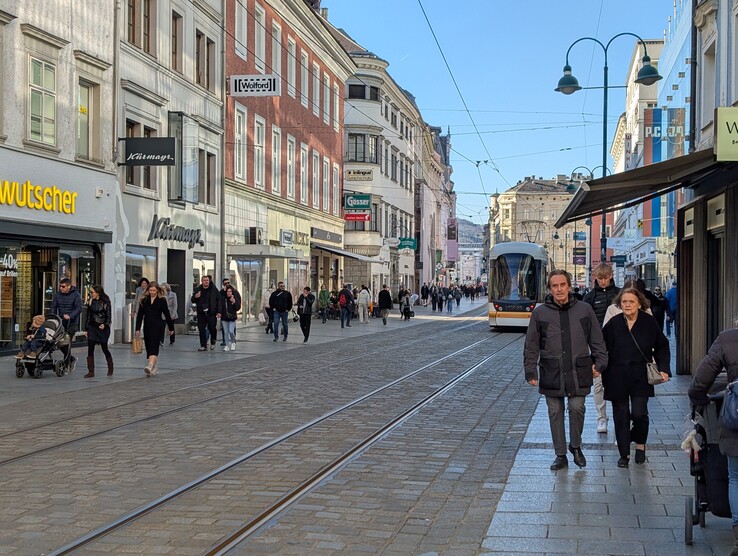

More pictures of our first tour in Linz
Zooming in on the Pöstlingberg
If you look across the Danube to the other side of the river from the old town, the 539-meter Pöstlingberg dominates the scenery. A pilgrimage church from the 18th century stands on its peak. We will visit it later, but first we want to test the zoom capabilities of our two smartphones with this scenery.
On the Oppo phone, the brown and green tones of the trees appear more varied and less muddy even at low zoom levels.
The differences between the cameras become visible at higher zoom levels. While the Google Pixel 9 Pro only offers up to 30x zoom and needs AI to smooth out the edges, the Oppo Find X8 Pro still creates a relatively realistic image at 30x zoom that doesn't look too blurry. At higher zoom levels, the trees clearly show that the phone has to work with AI enhancements. However, the church facade still looks quite realistic even at 120x zoom.
Oppo Find X8 Pro
Along the Danube
The Danube, a major waterway and recreational area, still characterizes the city today. We walk from the city center down the Danube towards the harbor. A very special highlight for street art fans is said to be located there. But first we pass the Brucknerhaus, a concert hall named after the world-famous composer Anton Bruckner, who was born near Linz and also worked here for some time.
There are numerous statues and sculptures around the concert hall that relate to the theme of music. If you look at the first of the three figures playing a flute here, you might think that the Google Pixel 9 Pro would produce a much sharper image here. However, the fact is that the Oppo Find X8 Pro has simply chosen the second statue as the focus point.
Details in the background, such as the suspension of the awning at the top right or the bamboo sticks at the bottom of the image, also appear razor-sharp in the Oppo image, whereas they are somewhat blurred in Google's enlarged image.
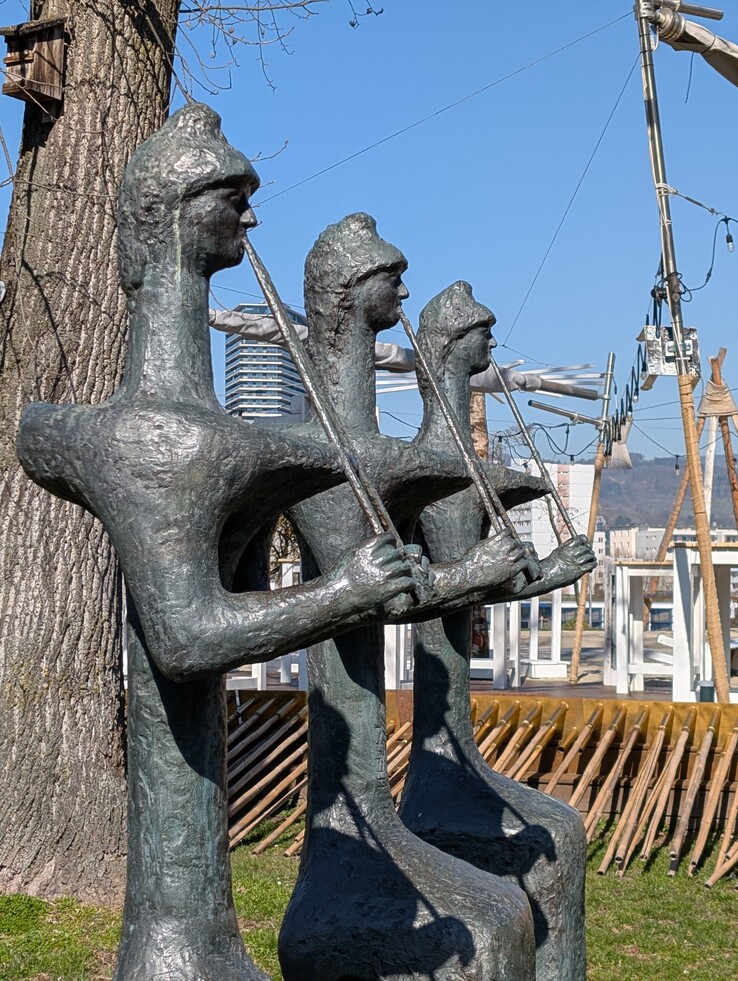
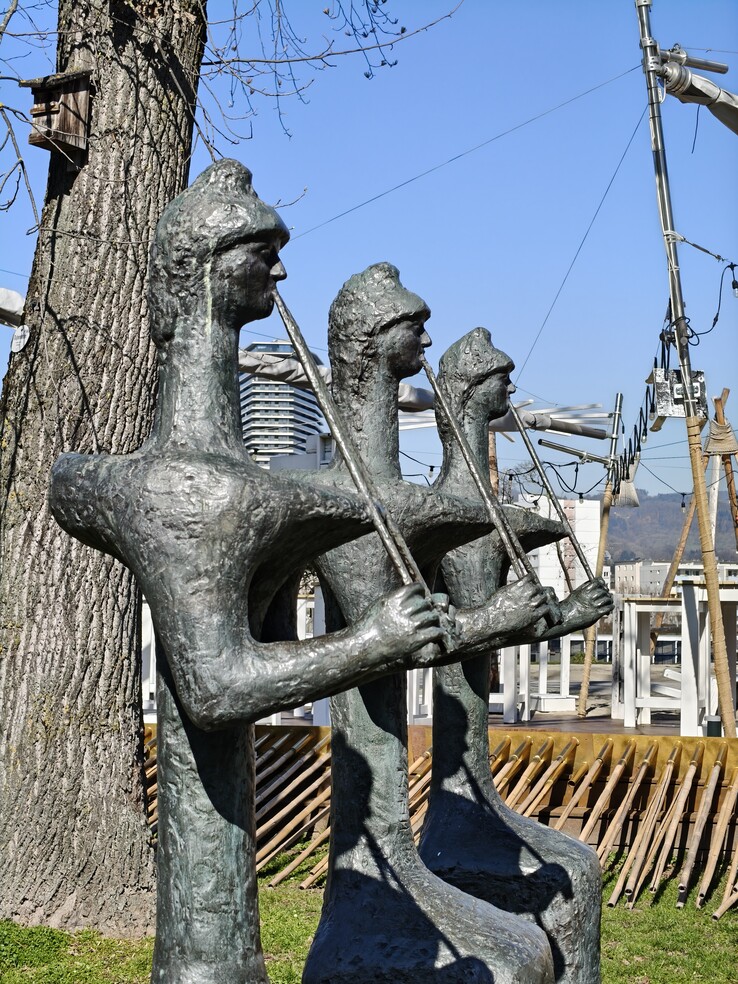
Again the Pöstlingberg, this time reflected in the glass facade of the Bruckner House.
These reflections are shown well by both phones, so you can see nice effects here.
However, the "frame", so the metal parts of the facade and the steps, are much sharper on the Oppo phone.
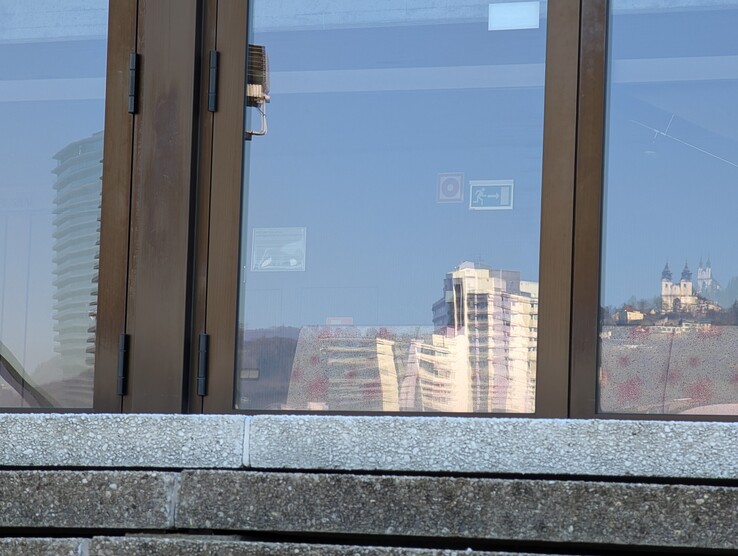
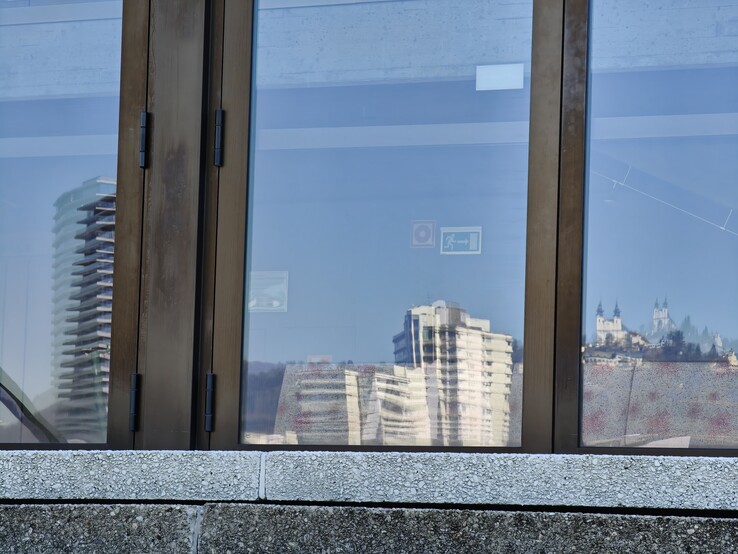
After a short hike, we reach the winter harbor, which used to protect ships from ice. It is still used today, for example for excursion boats or rowing.
When we take a photo of the ships, the first thing we notice are the different colors. While Google focuses on the blue tones of the morning light, the Oppo image is less bluish. The traffic sign on the left in the Oppo picture is also much clearer to read.
With details such as the crane or the tangle of ship structures, the image from the Oppo camera appears more contrasty and clearer, while Google's image quickly becomes grainy.

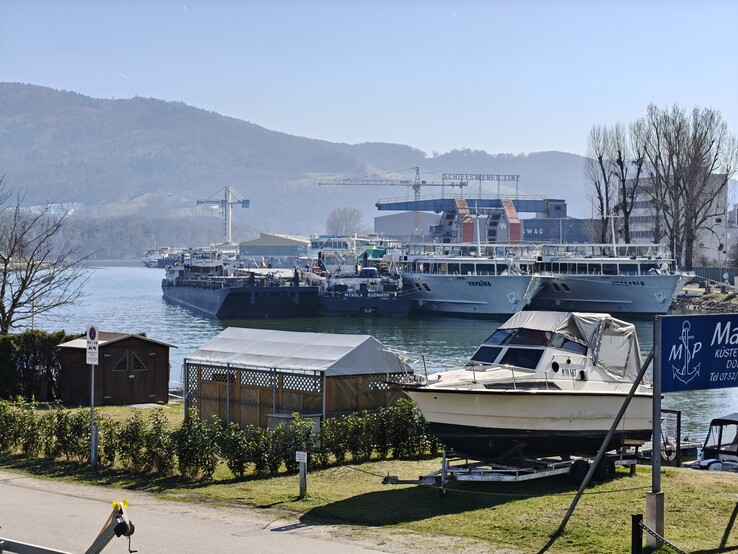
In the Mural Harbor
The large Linz harbor area is also a huge commercial area with stores and offices on the land side. Not an incredibly exciting place for a walk, you might think, if there weren't murals everywhere.
For example, we discover one on a residential building showing two birds.
The picture from the Google Pixel 9 Pro appears somewhat more grainy in detail. Lines are less clean and colors are more uneven. At the same time, the roof surface of the house appears sharper and more detailed in the photo from the Google phone.
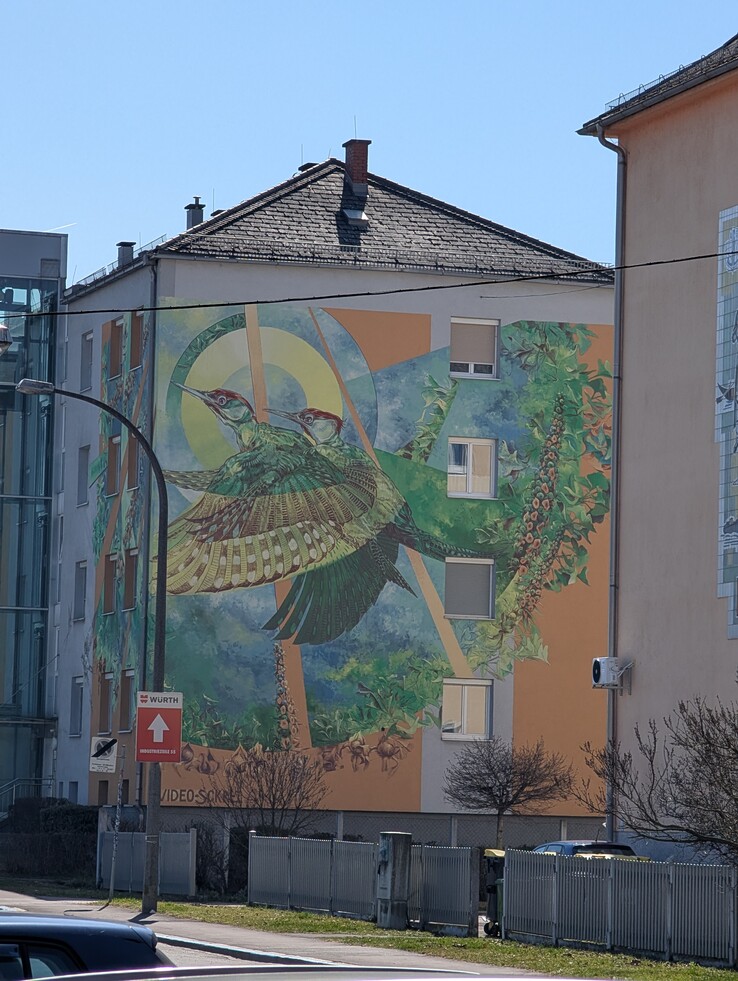
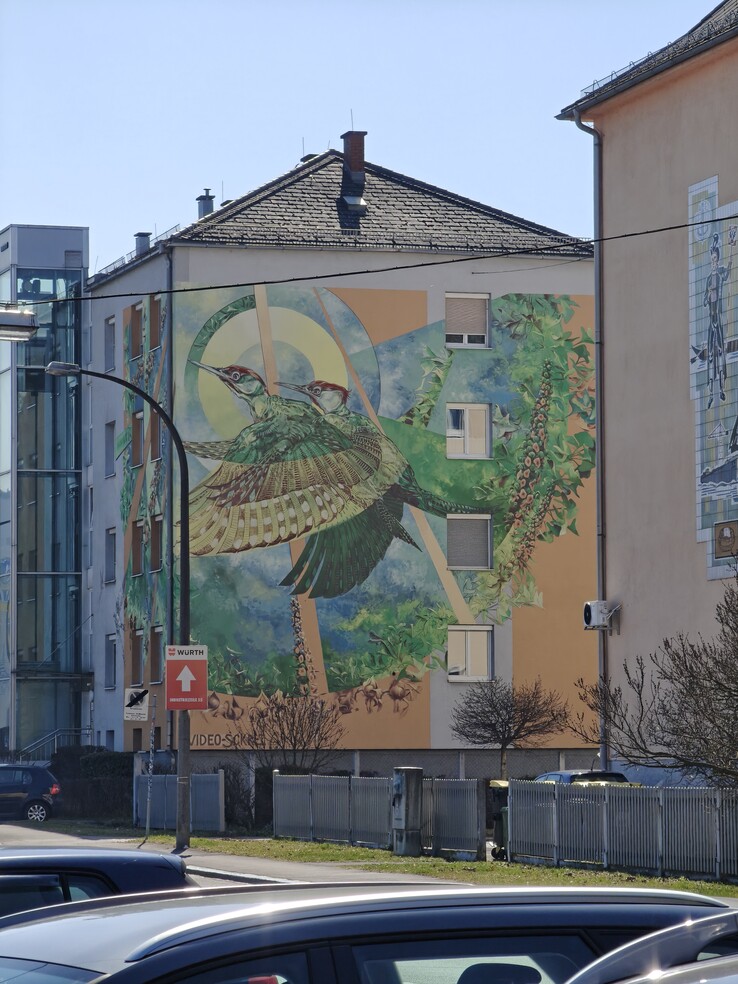
Now we are approaching the hotspot for street art fans in Linz, the Mural Harbor. Large parts of the harbor area are decorated with huge murals, but other objects in the harbor have also been artistically transformed. The harbor is still in use, which is why entry is only permitted with a guide.
As there were no guided tours on the day of our visit, we can only take photos of the area visible from the street. But that is impressive enough. Two silos have been redecorated as ketchup and mustard bottles.
Only the largest letters on the tomato bottle is clearly legible in the photos from both phones. The smaller lettering is distorted, you can see that Google's AI is trying to create legible characters here, but failed to do so.
The male holding the word "Naise" appears much sharper in the photo from the Google phone than in the Oppo.
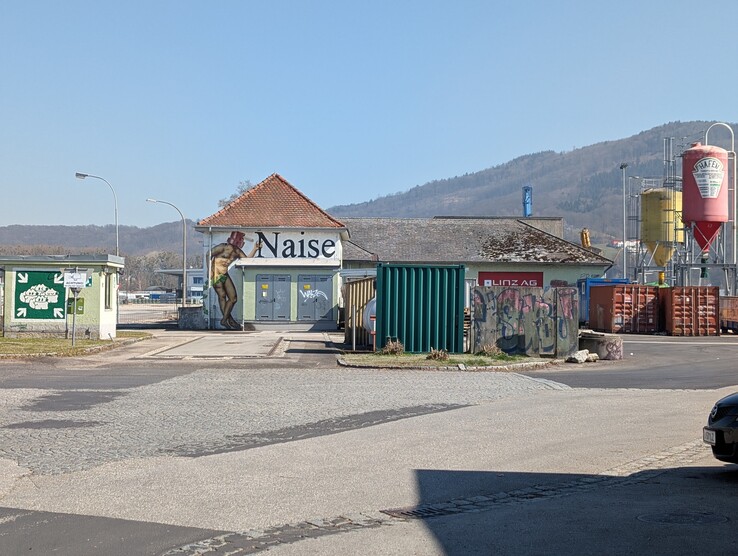

Linz at night
In the evening, we walk through the alleyways of the old town and up to the old Linz Castle, which has been converted into a museum with a modern extension.
From up here you have a great view of the city with its baroque church towers and the steaming chimneys of the factories in the distance.
The Google Pixel 9 Pro brightens up a little bit more here, but overdoes the colors, for example in the red tree on the left. The photo from the Oppo camera is again sharper in detail, but the photos from both phones convey a beautiful night mood.
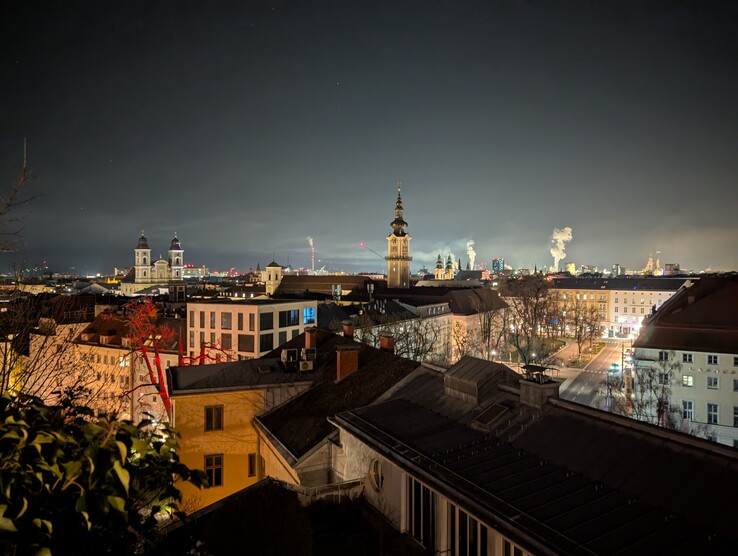

There is a statue in the castle park, which casts a huge shadow on the wall behind it thanks to the dramatic lighting.
In fact, the Google Pixel 9 Pro manages to bring out the different colors of the masonry better and make the photo look more mystical overall by using slightly warmer lighting. However, the leg of the statue is also much brighter than in the picture from the Oppo phone.


Linz's main square is still home to hotels that have been accommodating guests for centuries.
The picture of the neon sign shows a different approach of the two cameras. While the Google Pixel 9 Pro lets the neon lights shine through and thus shows a nice effect, the Oppo Find X8 Pro chooses a lower exposure for this area, making the lettering easier to read.
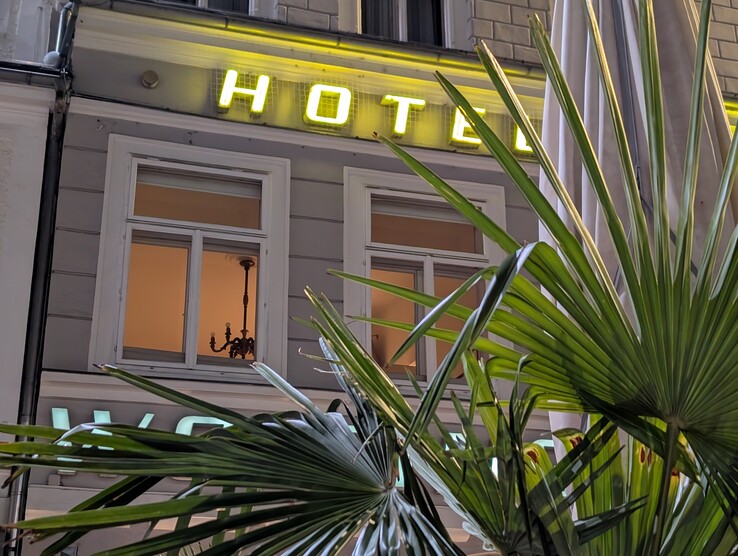
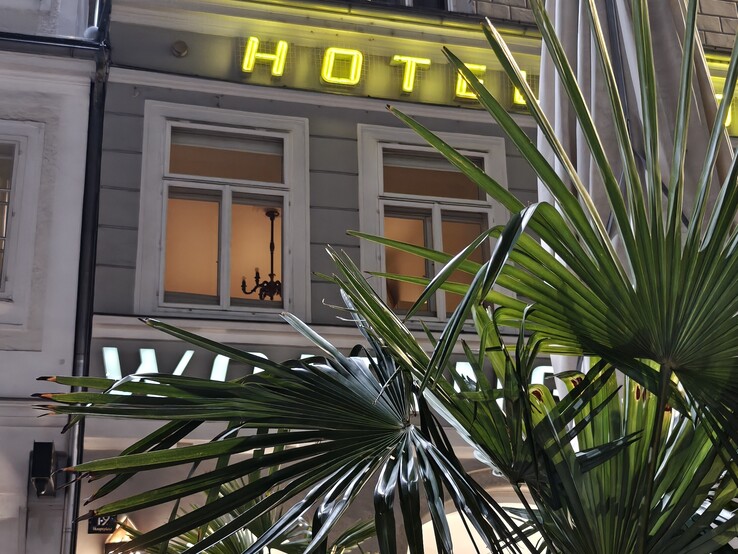
More night images
Finally up the mountain
On our last day in Linz, we finally want to explore the Pöstlingberg, which dominates the other side of the Danube.
This is very easy with the Pöstlingbergbahn, you can simply get on at the main square and ride up. It is a technical masterpiece, namely one of the steepest adhesion railroads in the world. This means that it works without a cogwheel drive or cable pull. It was opened in 1898.
The carriages that run up the Pöstlingberg today are no longer original, but have a pretty retro-style interior with wooden benches and a beige-green exterior.
Both cell phones take a very sharp picture of the Pöstlingbergbahn, there are hardly any differences to be seen here. The stop sign in the background is shown a little more accurately on the Pixel 9 Pro.
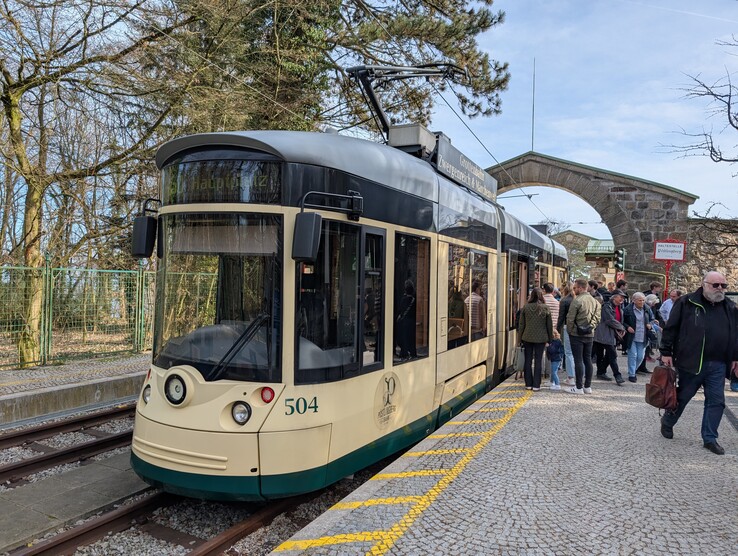
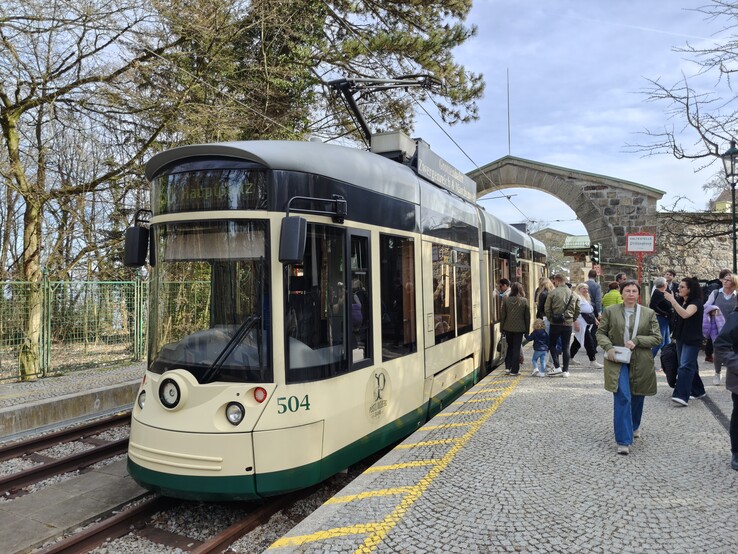
Of course, you also have a wonderful view of Linz, the Danube and the Alps in the distance from the mountain. So we grab the two phones and take a video in 4K and at 60 fps.
The first impression is quite similar for both phones. Great image quality, while the Oppo Find X8 Pro suppresses wind noise a little better.
You can clearly see how the phones switch between the lenses when zooming. This only happens once on Google's Pixel 9 Pro and twice on the Oppo device, although the final quality at maximum zoom is of course significantly better on the Find X8 Pro. On the other hand, Google's zoom is smoother.
Conclusion on the camera comparison in Linz
We took a risk and went to Linz, to follow the slogan of the tourism agency. And it was worth it. First of all, there are the many cultural attractions with music festivals, concerts, theaters and interesting museums.
Then there is the open-air art with murals in the city and in Mural Harbor, which make Linz special. But the location on the Danube and the Pöstlingberg as a vantage point also offer many opportunities for a short break.
The two phones we had with us convinced us. You can record beautiful vacation memories with both the Google Pixel 9 Pro and the Oppo Find X8 Pro.
However, the Oppo phone offers a few more options thanks to the higher optical zoom and the image quality is often a little bit better. That's why we would ultimately opt for the Find X8 Pro if we had to make a choice.
On the other hand, the Google Pixel 9 Pro is already available at a significant discount in many markets, and if you want to save money, you don't have to sacrifice much camera quality in your everyday or vacation photos.
The Google Pixel 9 Pro was kindly loaned to us by the German online retailer notebooksbilliger.de for the purpose of this smartphone camera comparison trip.
Transparency
The selection of devices to be reviewed is made by our editorial team. The test sample was provided to the author as a loan by the manufacturer or retailer for the purpose of this review. The lender had no influence on this review, nor did the manufacturer receive a copy of this review before publication. There was no obligation to publish this review. As an independent media company, Notebookcheck is not subjected to the authority of manufacturers, retailers or publishers.
This is how Notebookcheck is testing
Every year, Notebookcheck independently reviews hundreds of laptops and smartphones using standardized procedures to ensure that all results are comparable. We have continuously developed our test methods for around 20 years and set industry standards in the process. In our test labs, high-quality measuring equipment is utilized by experienced technicians and editors. These tests involve a multi-stage validation process. Our complex rating system is based on hundreds of well-founded measurements and benchmarks, which maintains objectivity. Further information on our test methods can be found here.





